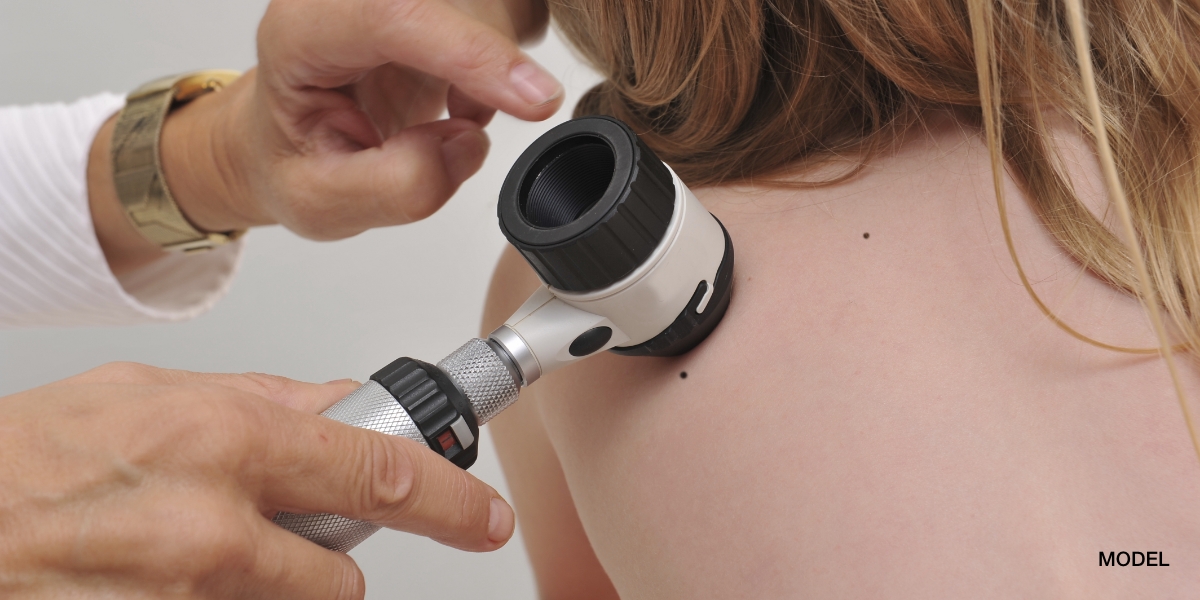
If you’re undergoing a skin cancer screening, you’re probably expecting your dermatologist to be looking for moles with changing appearances, or signs of Melanoma. But there are several other skin lesions that dermatologists look for during skin cancer screenings, including a Blue Nevus. A Blue Nevus is a blue colored mole that can be present at birth or develop later in life. Blue Nevus’ typically present on the head, neck, back of the hands, sacral area, and the feet. If you’re told that you have a Blue Nevus after a skin cancer screening, one of your first questions might be, “Is it cancerous?” Well, there are two types of Blue Nevus’ – a common Blue Nevus, which is benign, and a cellular blue nevus – which can undergo a malignant transformation.
What are the Differences Between a Common Blue Nevus and a Cellular Blue Nevus?
A Common Blue Nevus is a benign, non-cancerous, mole. It is usually flat or dome-shaped with a smooth surface. Common Blue Nevus’ can range in size from 0.5 to 1cm, with the color varying from being blue-gray to blue-black. Cellular Blue Nevus’, however, are typically larger in size – at least 1 cm in diameter, and more nodular. Cellular Blue Nevus’ can also increase in size over time, where as Common Blue Nevus are typically stable in size. A Blue Nevus can be diagnosed by visual inspection alone, but a biopsy is required to find out if a Cellular Blue Nevus has malignant tissue.
My Dermatologist Says I Have a Cellular Blue Nevus. What’s Going to Happen Next?
If your skin cancer screening reveals that you have a Cellular Blue Nevus, your dermatologist is most likely going to want to remove the mole so that a biopsy can be performed to determine if there are any malignant (cancerous) cells in the mole tissue. A biopsy is performed through an excision, or by cutting out the mole with a scalpel. First, a local anesthetic is applied to the area around the mole, to numb the skin. Then a blade is used to completely remove the mole. Typically, a few mm of surrounding skin may also be removed.
Once the mole is removed, it will be sent to a lab where it will be examined under a microscope to see if any malignant cells are present. Biopsy results are typically available in 2 weeks. If your mole comes back as malignant and it has spread to the surrounding skin, a second excision will be performed.
I Think I Have a Blue Nevus. What Should I Do?
All patients should have an annual skin cancer screening, whether they suspect they have a skin lesion or not. To schedule your skin cancer screening today, call our offices today.




